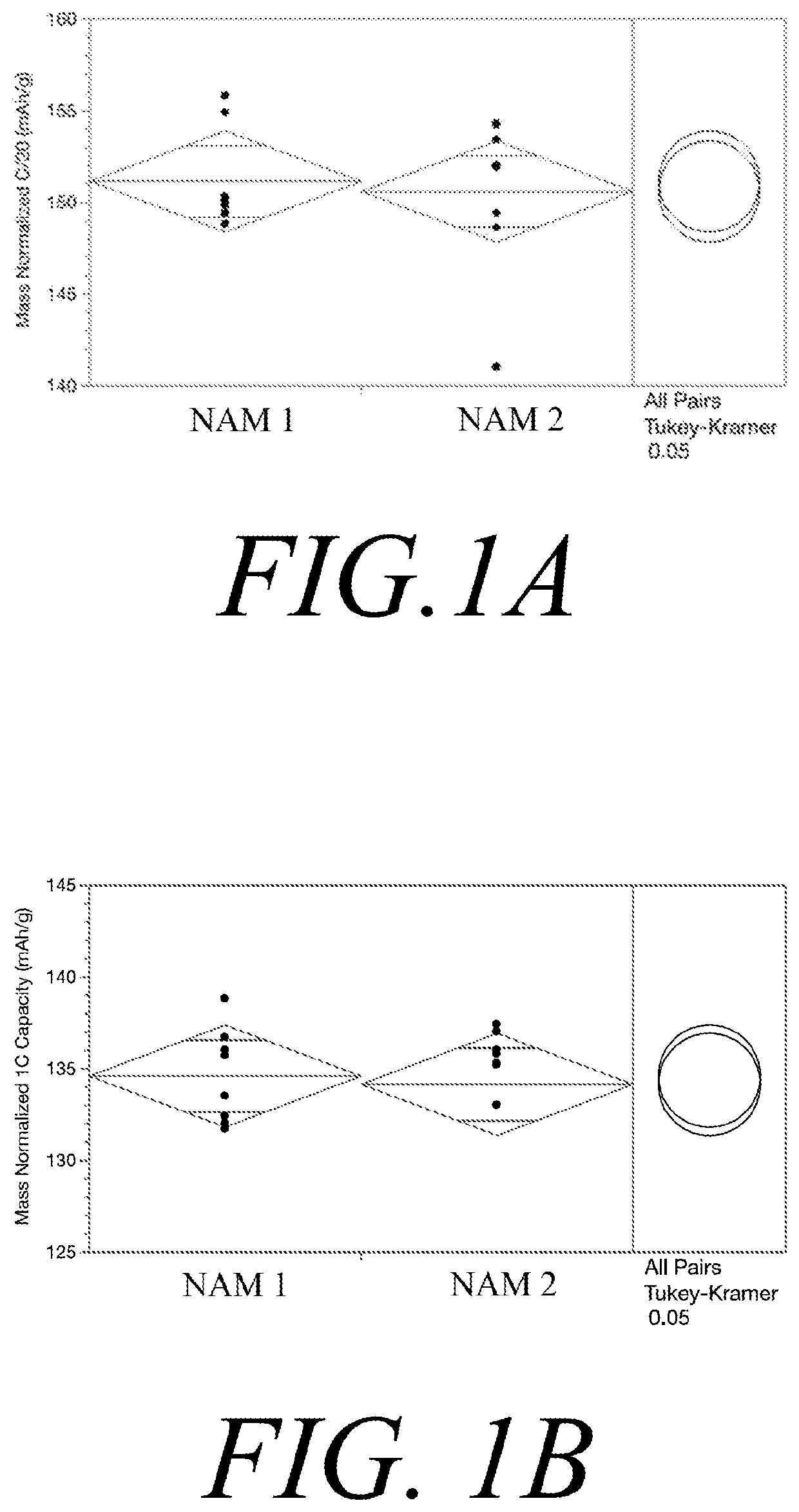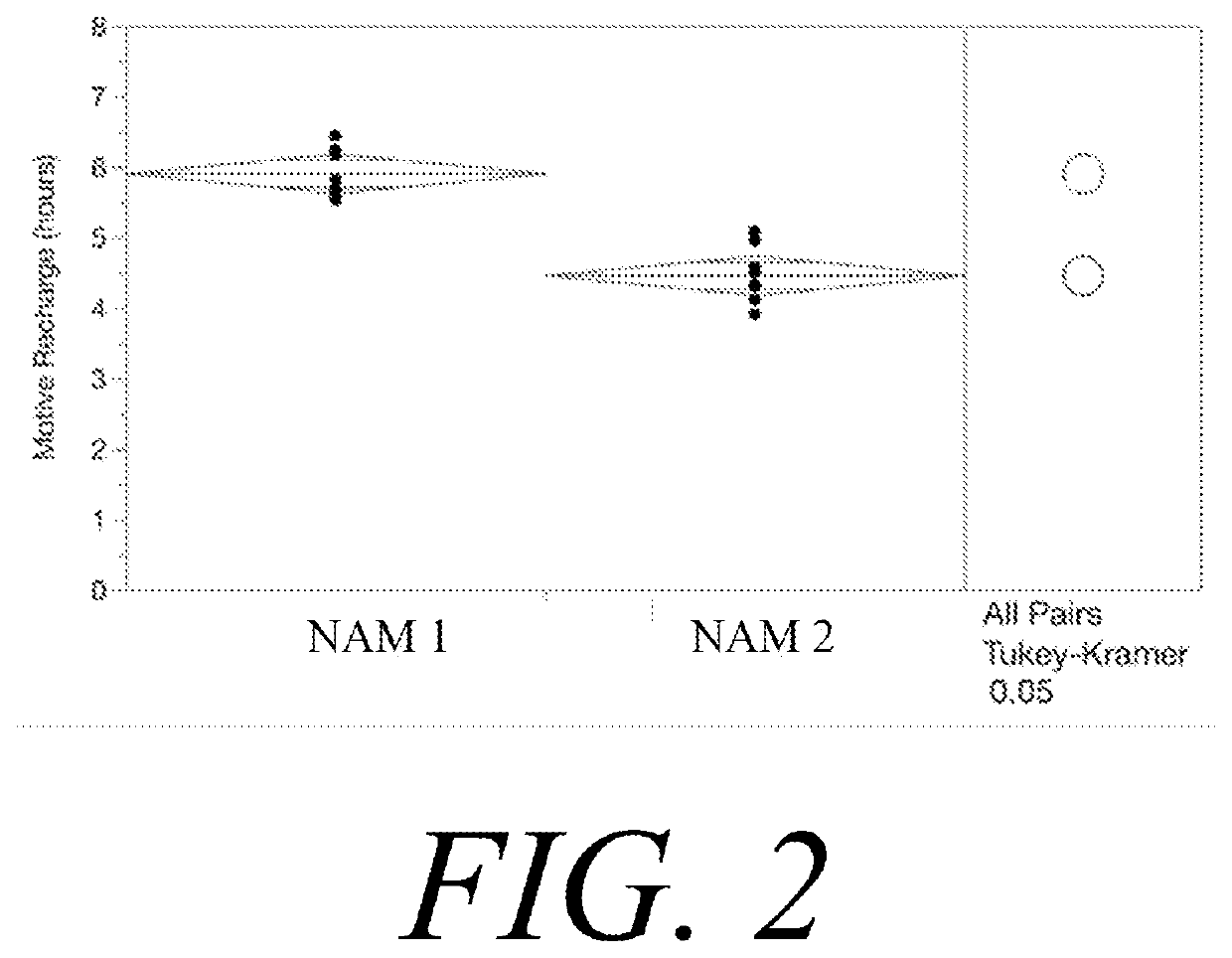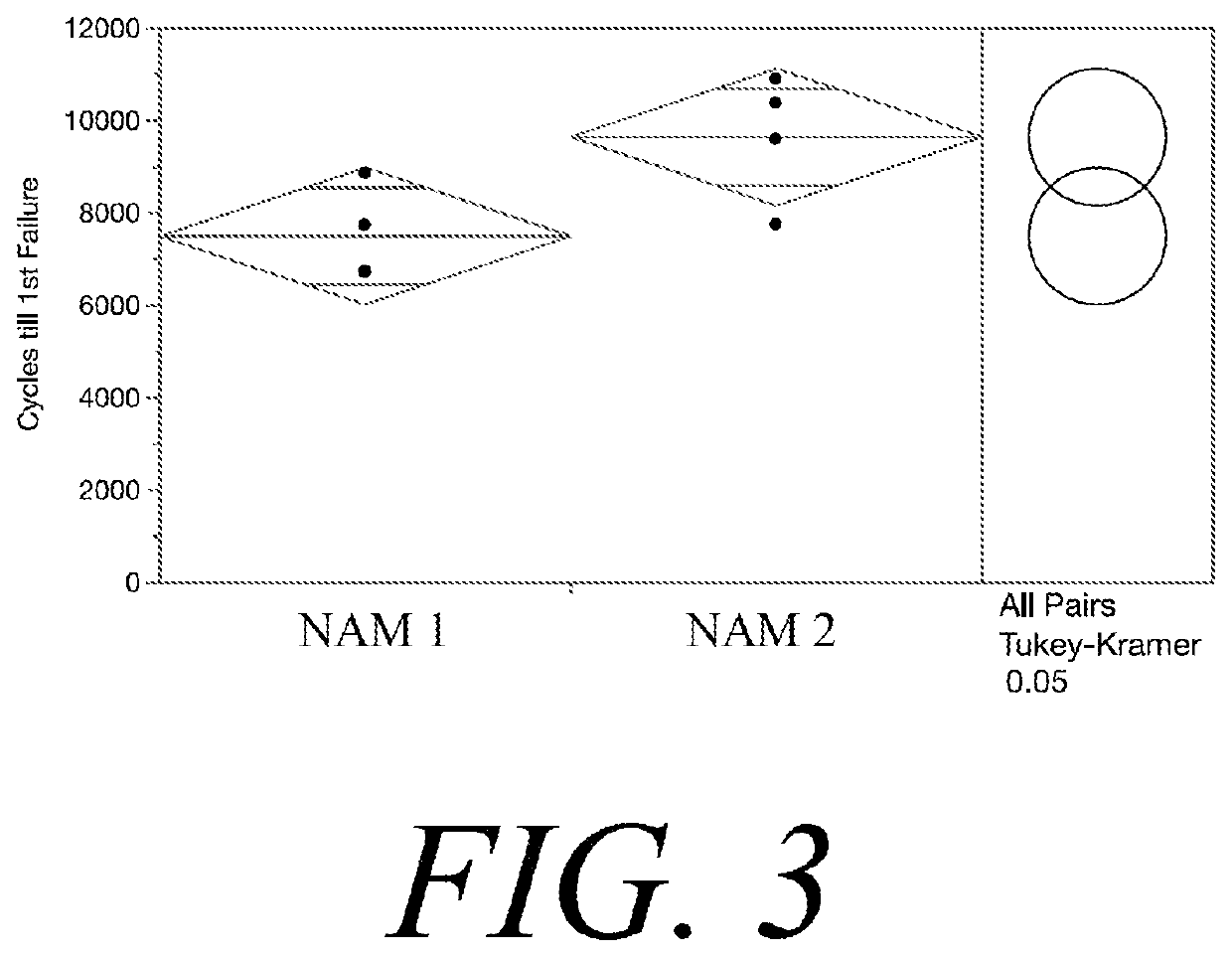Hydrated carbon material powder and use of it for preparation of an electrode for an electrical storage device
a technology of hydrated carbon and electrodes, which is applied in the direction of cell components, lead-acid accumulators, transportation and packaging, etc., can solve the problems of affecting the integrity of the final cured and formed plate, and affecting the service life of the electrod
- Summary
- Abstract
- Description
- Claims
- Application Information
AI Technical Summary
Benefits of technology
Problems solved by technology
Method used
Image
Examples
example 1
Small Scale Preparation of Hydrated Carbon Material Powder
[0227]In four separate batches, 10 g of Carbon 1, Carbon 2, Carbon 3, and Carbon 4 powder were added to a “Thinky” planetary overhead mixer. Incremental additions of de-ionized water were added during mixing in order to determine the amount of water required to hydrate each sample. It was determined that the required water content increased in direct proportion to the pore volume of the porous carbon material. The results are shown in Table 1 below, along with the physical characteristics of each carbon material.
TABLE 1Physical Properties of Hydrated Carbon Material PowderWaterTotalTotalExcessSSAPVParticleContentPVWaterWater†Sample(m2 / g)(cc / g)Size(% w / w)(mL)(mL)(%)Carbon 117481.298.5μm6712.92055# (42) Carbon 217111.2960μm6712.92055 (42)Carbon 36750.5360μm475.3970 (27)Carbon 417090.728.5μm507.21039 (22)†Excess water relative to the pore volume calculated using Equation 2 (values in parentheses)#Percentages were calculated usin...
example 2
Pilot Scale Preparation of Hydrated Carbon Material Powder
[0233]Carbon 1 and Carbon 2 powder (1 kg) were added to a ROSS planetary mixer. Water was added and mixed with the porous carbon material to adequately hydrate the porous carbon material resulting in hydrated carbon material powder.
[0234]Water content of the final hydrated carbon material powder was calculated using the equation shown in Example 1. The actual water content was determined by sampling the hydrated carbon material powder of Carbon 1 and Carbon 2 and drying each sample in a convection oven at 100 ° C. for 12 hours. The actual water content for hydrated carbon material powder of Carbon 1 and Carbon 2 were 59% and 46% w / w, respectively.
example 3
Uniformity Test
[0235]Additional samples of Carbon 2 were taken from the mixture of Example 2 to determine the uniformity of the final hydrated carbon material powder. Samples were collected from different positions of the bulk material as indicated in Table 3, below. The water content was determined for each of the samples according to the procedure described in Example 2. The data of Table 3 show that the overall mixture showed highly uniform water content throughout.
TABLE 3Uniformity Measurements of Hydrated Carbon Material PowderWater Content†Position(% w / w)Bottom45.6Bottom45.8Top45.9Top46.0Corner-right45.5Corner-right45.9Corner-right45.6Corner-left45.6Corner-left45.7Corner-left45.8†Standard deviation = 0.4%
PUM
 Login to View More
Login to View More Abstract
Description
Claims
Application Information
 Login to View More
Login to View More - R&D
- Intellectual Property
- Life Sciences
- Materials
- Tech Scout
- Unparalleled Data Quality
- Higher Quality Content
- 60% Fewer Hallucinations
Browse by: Latest US Patents, China's latest patents, Technical Efficacy Thesaurus, Application Domain, Technology Topic, Popular Technical Reports.
© 2025 PatSnap. All rights reserved.Legal|Privacy policy|Modern Slavery Act Transparency Statement|Sitemap|About US| Contact US: help@patsnap.com



